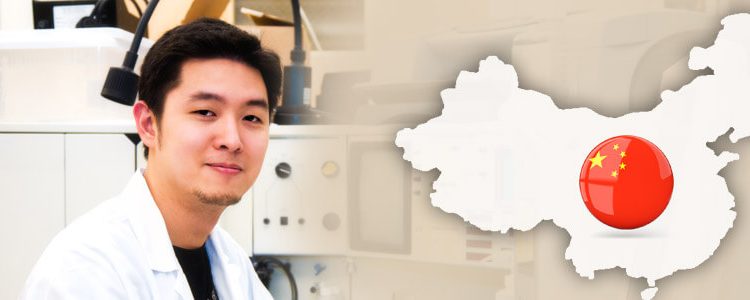Chinese Scientists Increase Global Research Collaboration

China is steadily moving towards playing a major role in the global economy. Changes to its economic policy, starting in the late 1970’s, initiated a shift away from isolationism. According to the World Bank, this has brought about “the fastest sustained expansion by a major economy in history—and has lifted more than 800 million people out of poverty.” Although it still has a long way to go, China’s momentum continues. This explosive economic growth and change in attitude regarding participation in the global economy have influenced other areas of Chinese life, including the work of Chinese scientists. A recent report by Springer’s Nature Index states, “over 50% of China’s high-quality research involves international co-authors.” Since 2012, China’s contribution of articles to the Nature Index has increased, with a notable increase in articles having international co-authors.
Scientific Research Increasingly International
Nature Index China reviewed Clarivate Analytics’ Web of Science’s database, which examines data beyond the 68 journals tracked by the index: China’s articles with international co-authors comprise less than 25% of their total contributions. However, this is attributable to the high rate of overall growth in articles by Chinese scientists, rather than a lack of investment in international collaboration.
In fact, there are several government programs helping to fund and encourage Chinese scientists to go beyond their country’s borders: Framework Programme 7, Horizon 2020, Thousand Talent Program, and World-Class 2.0.
- Framework Programme 7 – Run by the European Union (EU) from 2007 to 2013. China was the third largest international partner country: 383 Chinese organizations participating in 274 collaborative research projects accumulating €35 million of funding from the EU
- Horizon 2020 – More than €100 million from the EU’s Horizon 2020 program will be matched yearly by at least 200 million yuan from Chinese programs, for collaborations between European and Chinese participants
- Thousand Talent Program – Run by the Central Origination Department of the Communist Party, its goal is for Chinese-born scientists to return to China with their international connections intact
- World-Class 2.0 – A Chinese government initiative that provides funding to universities for the purpose of international collaboration and raising the status of Chinese universities.
In addition to those specific initiatives, Chinese science and technology agencies have departments devoted to promoting collaboration. The three major agencies are the Ministry of Science and Technology, the National Natural Science Foundation, and the Chinese Academy of Sciences. The Minister of Health, the President of the Chinese Academy of Medical Sciences, and the Presidents and Directors of universities and hospitals have also encouraged collaboration.
Global Collaborators
China’s main collaborators in scientific research are the United States, Germany, the United Kingdom, Italy, and Singapore.
- United States – China’s most significant collaborator is the US. More than 25% of the research scientists working in the US are from other countries, many of whom are Chinese.
- Germany – Five of the top 10 international bilateral collaborations in China are with the Max Planck Society, Germany’s most successful research organization.
- United Kingdom – Significant collaboration is happening with Oxford University, including the Centre for Translational Immunology (CTI) at Oxford, a joint venture between the Chinese Academy of Medical Sciences and Oxford, as well as two other Chinese institutions.
- Italy – In 2016, the National Institute for Nuclear Physics in Italy and the Institute of High Energy Physics, Chinese Academy of Sciences (CAS) formed the most prominent collaboration between a Chinese institution and an international institution.
- Singapore – Since 2012, the increase in China’s articles in the Nature Index has largely been in the field of chemistry, especially owing to the collaboration between China and Singapore and the partnership between the Hong Kong University of Science and Technology (HKUST) and the National University of Singapore (NUS).
Intra-Country Collaboration
Despite this progress, there are still barriers to international collaboration, which include language, institutional resources, and concerns about security. The language barrier is an obvious one—with China’s former isolationist attitude, not many people in the country would have learned to speak another language and few people around the world would have learned to speak, read, write, and understand Chinese. Although China has made great strides to join the world economy and has brought many of its people up from poverty. However, as with most countries, institutional resources and funding for scientific research are not easy to come by. The hope is, with continued economic progress and expansion, China will have more resources with which to promote its scientific endeavors.
Concerns about security lead to a tricky and unpleasant area of discussion. Recent investigations have found Chinese scientists guilty of stealing research in the areas of agriculture, trade secrets, and military technology. The pressure to compete on the global market has its upside in increased collaboration and its downside when scientists feel pressured to make advances for their country despite engaging in unethical means. Regardless of this spot on their reputation, Chinese scientists remain principled and dedicated to their fields of study. Within China, inter-city and inter-institutional collaborations are robust. Publishing Perspectives reports on 56 partnerships between Chinese institutions that are stronger than the leading global pairing. Inter-city partnerships represent the greatest number of collaborations in China: “institutions in smaller cities have expertise that makes them strong collaborators in their own right.”
The Nature Index report likely shows the beginning of a trend, as China’s high-quality research expands into the global scientific community. Nature Index and Clarivate Analytics will, no doubt, be keeping a close watch on this trend.









